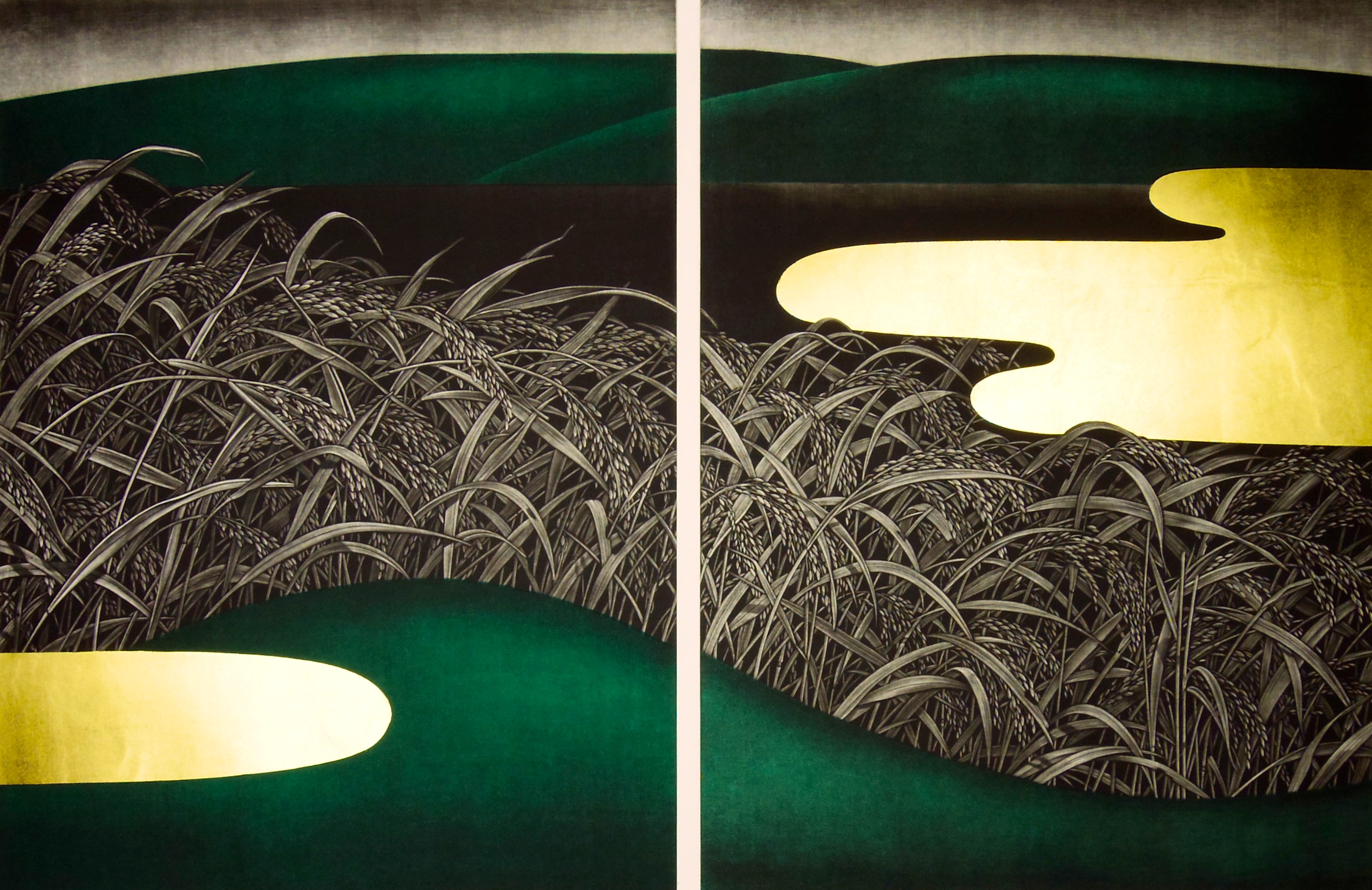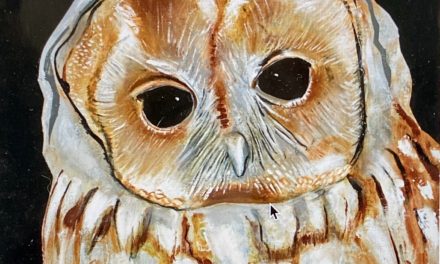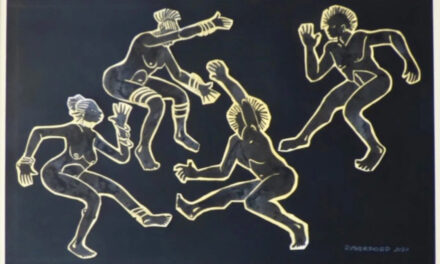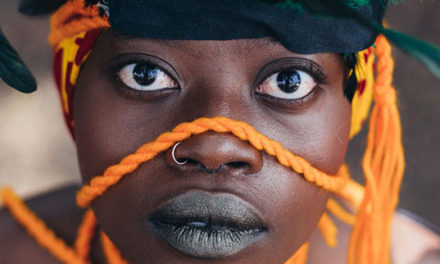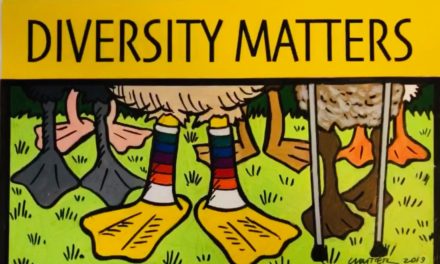(Above: One of a series of Katsunori Hamanishi’s mezzotint prints that explores the concept of “silence”)
By Randi Bjornstad
One of Japan’s finest printmakers — Katsunori Hamanishi — has arrived in Eugene, where he will be honored at an artist’s reception from 2 p.m. to 5 p.m. on July 22 at the White Lotus Gallery, which recently opened a show of his work entitled “Hamanishi’s Splendor: The Art of Mezzotint and Gold Leaf.”
The show will be on the walls at the downtown Eugene gallery through Aug. 26.
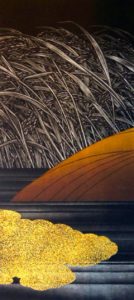
Silence is one of several themes explored in the Hamanishi exhibit
Many in the art world consider the printmaking process called mezzotint to be the most difficult of all printmaking techniques. It dates to 17th-century Amsterdam and flourished as a widely practiced art form in England during the 18th century.
Mezzotint involves engraving tiny pits — either dots or lines — into the plate that holds the ink that is transferred to paper or fabric to create the print. The pitted areas retain areas of ink that give the final print a far richer appearance of texture than a smooth plate would.
Because of this rendering of texture, the mezzotint process became a favorite method of creating reproductions of fine-art paintings.
Hamanishi is considered a premier master of the mezzotint print, which he has taken a step further with the addition of traditional Japanese gold leaf overlay, as well as silver and mica. His printmaking subjects vary from architectural details such as roof tiles and buildings to more abstract renditions of rice paddies and rice grains. More recently, he has focused on
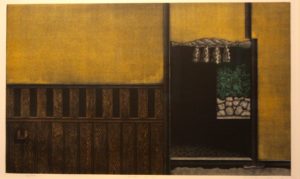
Architectural elements are a favorite theme in Hamanishi’s work
a series featuring stylized views of kimonos and traditional Japanese themes depicting details in nature.
Besides being a fine artist, White Lotus owner Hue-Ping Lin considers Haminishi and his wife, who are making their second visit to Eugene to appear at the gallery, to be close friends. Chen-Yun Yang, a staff member at the gallery, happily shares one of her favorite anecdotes about the artist.
“When he was only 8 years old, he saw a girl and he said he knew she was going to be his wife someday,” Yang said with a laugh. “And they did get married and have been married for many years — they are such a happy couple.”
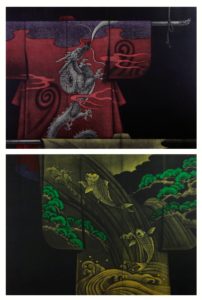
Katsunori Hamanishi’s carp-and-dragon mezzotint tells of an ancient Chinese myth
One of the largest pieces in the White Lotus exhibit of Hamanishi’s work depicts an ancient Chinese proverb in which carp swim up a waterfall cascading downward from a mythical mountain until they arrive at a formidable gate.
“Only the strongest and bravest of the carp can leap successfully over the gate, which is called the ‘Dragon’s Gate,’ and those that do become dragons themselves,” Yang said. “The reason dragons are depicted in (Asian) art with scales is because they originated as carp — teachers often compliment students who do extraordinary work with having jumped over the dragon’s gate.”
Haminishi was born in Hokkaido, Japan, in 1949 and earned a degree in art from Tokai University in 1973. In the late 1980s, he spent a year as a visiting artist at the Cleveland Art Institute. His work has been shown at the Smithsonian Institution, the Art Institute of Chicago and the Metropolitan Museum of Art.
While in Eugene, Hamanishi also will give a printmaking demonstration during a fundraiser for the nonprofit Whiteaker Printmakers studio.
Hamanishi’s Splendor: The Art of Mezzotint and Gold Leaf
When: Through Aug. 26
Where: White Lotus Gallery, 767 Willamette St. in downtown Eugene
Artist reception: 2 p.m. to 5 p.m. on July 22 at the gallery
Printmaking demonstration: 6 p.m. to 8 p.m. on July 26 at Whiteaker Printmakers, 1328 W. Second Ave. in Eugene’s Whiteaker neighborhood; whitprint.com/
Information: 541-345-3276, lin@wlotus.com or wlotus.com/

